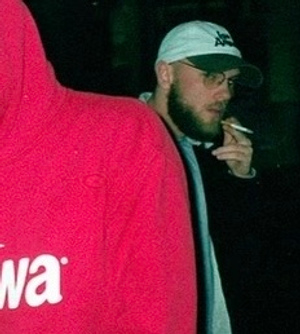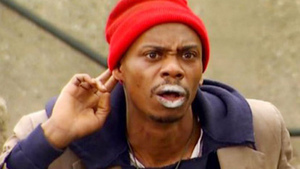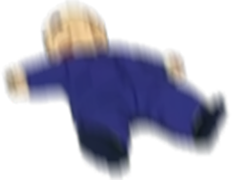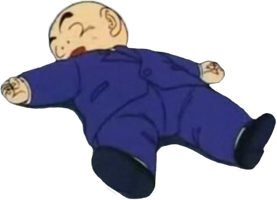 Tomorrow 🪄Aug 15, 2022·2 replies
Tomorrow 🪄Aug 15, 2022·2 repliesScreenshot because im not clicking a LinkedIn link
 Tomorrow
TomorrowScreenshot because im not clicking a LinkedIn link
I can tell your unemployed
 Tomorrow 🪄Aug 15, 2022
Tomorrow 🪄Aug 15, 2022 Skrimps N Grits
Skrimps N GritsI can tell your unemployed
I just don’t like apps that show people who looks at ur stuff
I read it and it's basic knowledge to any KTT user, might be new for LinkedIn boomers though.

The Weeknd’s career is a classic case study in mystery marketing. “Even no branding is branding,” he once said in an interview. Here are the tactics that helped him become a superstar.
In 2010, his first three songs—‘The Morning,’ ‘What You Need’ and ‘Loft Music’— were uploaded to YouTube by the anon user, ‘xoxxxoooxo.’
There were no traces of his name or face. He hid everything.
The Weeknd was so anonymous that his co-workers at American Apparel listened to his music at work without realizing it was him.
“I didn’t want to put a face to it,” he once told Forbes. “I wanted to create a fan base that loved me for my art.”
After his YouTube debut, Abel dropped ‘House of Balloons’, a free mixtape that sent his growing fanbase into a frenzy.
He finally shared his stage name, but still, no photos of the man behind the music.
After its release, Drake tweeted the download link to his fellow Toronto artist’s new project and featured it in OVO Sound’s blog. The mystery artist got more attention than ever before.
In 2012, The Weeknd finally showed his face in his music videos for “Rolling Stone” and “Wicked Games.” This was a huge step, but those cryptic videos helped maintain a low profile.
As the year progressed, Drake and The Weeknd’s friendship bloomed. Abel was heavily featured on Drake’s album ‘Take Care’ and it seemed inevitable that he would link up with Team OVO.
But Abel felt differently.
“I don’t want to sign under another artist because I feel I can be just as big or bigger.”
In 2012, The Weeknd launched XO Records as a joint venture with Republic Records, where Drake himself was also signed.
By this point, The Weeknd’s hair was full-on Basquiat-level. The hair was its own persona. It took attention away from Abel himself, which helped him maintain that mysterious edge.
His first setback came in 2013 when Kiss Land, his debut album, underperformed and had mixed reviews. He went back to the drawing board.
He wanted to make music that appealed to mainstream audiences. That required more exposure, which negated his brand so far, but he found the right balance.
Teaming up with pop music hitmaker Max Martin, he and Ariana Grande began recording sessions.
In 2014, The Weeknd and Ariana released ‘Love Me Harder,’ Abel’s first top 10 song on the Billboard Hot 100. That led to ‘Earned It,' ‘The Hills’ and ‘Can’t Feel My Face.’
His 2015 album, ‘Beauty Behind the Madness’ marked a watershed between his early fans and the masses.
While he lost some fans from his early days, he expanded to new audiences, which is a cycle every superstar goes through.
The Weeknd’s 2020 album, ‘After Hours’ was a return to the dark persona. He takes on a new identity with every project. He stays in character. The mystery continues.
He’s performed on the biggest stages. He’s dated famous celebrities. And still, we fully don’t know the true Abel Tesfaye.
What are your thoughts on The Weeknd's branding tactics?
 Tomorrow
TomorrowScreenshot because im not clicking a LinkedIn link
The Weeknd’s career is a classic case study in mystery marketing. “Even no branding is branding,” he once said in an interview. Here are the tactics that helped him become a superstar.
In 2010, his first three songs—‘The Morning,’ ‘What You Need’ and ‘Loft Music’— were uploaded to YouTube by the anon user, ‘xoxxxoooxo.’
There were no traces of his name or face. He hid everything.
The Weeknd was so anonymous that his co-workers at American Apparel listened to his music at work without realizing it was him.
“I didn’t want to put a face to it,” he once told Forbes. “I wanted to create a fan base that loved me for my art.”
After his YouTube debut, Abel dropped ‘House of Balloons’, a free mixtape that sent his growing fanbase into a frenzy.
He finally shared his stage name, but still, no photos of the man behind the music.
After its release, Drake tweeted the download link to his fellow Toronto artist’s new project and featured it in OVO Sound’s blog. The mystery artist got more attention than ever before.
In 2012, The Weeknd finally showed his face in his music videos for “Rolling Stone” and “Wicked Games.” This was a huge step, but those cryptic videos helped maintain a low profile.
As the year progressed, Drake and The Weeknd’s friendship bloomed. Abel was heavily featured on Drake’s album ‘Take Care’ and it seemed inevitable that he would link up with Team OVO.
But Abel felt differently.
“I don’t want to sign under another artist because I feel I can be just as big or bigger.”
In 2012, The Weeknd launched XO Records as a joint venture with Republic Records, where Drake himself was also signed.
By this point, The Weeknd’s hair was full-on Basquiat-level. The hair was its own persona. It took attention away from Abel himself, which helped him maintain that mysterious edge.
His first setback came in 2013 when Kiss Land, his debut album, underperformed and had mixed reviews. He went back to the drawing board.
He wanted to make music that appealed to mainstream audiences. That required more exposure, which negated his brand so far, but he found the right balance.
Teaming up with pop music hitmaker Max Martin, he and Ariana Grande began recording sessions.
In 2014, The Weeknd and Ariana released ‘Love Me Harder,’ Abel’s first top 10 song on the Billboard Hot 100. That led to ‘Earned It,' ‘The Hills’ and ‘Can’t Feel My Face.’
His 2015 album, ‘Beauty Behind the Madness’ marked a watershed between his early fans and the masses.
While he lost some fans from his early days, he expanded to new audiences, which is a cycle every superstar goes through.
The Weeknd’s 2020 album, ‘After Hours’ was a return to the dark persona. He takes on a new identity with every project. He stays in character. The mystery continues.
He’s performed on the biggest stages. He’s dated famous celebrities. And still, we fully don’t know the true Abel Tesfaye.
What are your thoughts on The Weeknd's branding tactics?
This is definitely true to an extent, but I also feel like things are different and you have to constantly engage a fanbase before your out of the current collective attention span
this could be an interesting discussion but this is just a summary of his career that doesn’t give anything close to insight.
 Flaphead 🎧Aug 15, 2022
Flaphead 🎧Aug 15, 2022I f***ing hate LinkedIn lmao
 youngtubesteak2
youngtubesteak2The Weeknd’s career is a classic case study in mystery marketing. “Even no branding is branding,” he once said in an interview. Here are the tactics that helped him become a superstar.
In 2010, his first three songs—‘The Morning,’ ‘What You Need’ and ‘Loft Music’— were uploaded to YouTube by the anon user, ‘xoxxxoooxo.’
There were no traces of his name or face. He hid everything.
The Weeknd was so anonymous that his co-workers at American Apparel listened to his music at work without realizing it was him.
“I didn’t want to put a face to it,” he once told Forbes. “I wanted to create a fan base that loved me for my art.”
After his YouTube debut, Abel dropped ‘House of Balloons’, a free mixtape that sent his growing fanbase into a frenzy.
He finally shared his stage name, but still, no photos of the man behind the music.
After its release, Drake tweeted the download link to his fellow Toronto artist’s new project and featured it in OVO Sound’s blog. The mystery artist got more attention than ever before.
In 2012, The Weeknd finally showed his face in his music videos for “Rolling Stone” and “Wicked Games.” This was a huge step, but those cryptic videos helped maintain a low profile.
As the year progressed, Drake and The Weeknd’s friendship bloomed. Abel was heavily featured on Drake’s album ‘Take Care’ and it seemed inevitable that he would link up with Team OVO.
But Abel felt differently.
“I don’t want to sign under another artist because I feel I can be just as big or bigger.”
In 2012, The Weeknd launched XO Records as a joint venture with Republic Records, where Drake himself was also signed.
By this point, The Weeknd’s hair was full-on Basquiat-level. The hair was its own persona. It took attention away from Abel himself, which helped him maintain that mysterious edge.
His first setback came in 2013 when Kiss Land, his debut album, underperformed and had mixed reviews. He went back to the drawing board.
He wanted to make music that appealed to mainstream audiences. That required more exposure, which negated his brand so far, but he found the right balance.
Teaming up with pop music hitmaker Max Martin, he and Ariana Grande began recording sessions.
In 2014, The Weeknd and Ariana released ‘Love Me Harder,’ Abel’s first top 10 song on the Billboard Hot 100. That led to ‘Earned It,' ‘The Hills’ and ‘Can’t Feel My Face.’
His 2015 album, ‘Beauty Behind the Madness’ marked a watershed between his early fans and the masses.
While he lost some fans from his early days, he expanded to new audiences, which is a cycle every superstar goes through.
The Weeknd’s 2020 album, ‘After Hours’ was a return to the dark persona. He takes on a new identity with every project. He stays in character. The mystery continues.
He’s performed on the biggest stages. He’s dated famous celebrities. And still, we fully don’t know the true Abel Tesfaye.
What are your thoughts on The Weeknd's branding tactics?
Was expecting a more interesting read not a 6th grader’s essay on their favorite artist
 AR15 💯Aug 15, 2022·2 replies
AR15 💯Aug 15, 2022·2 repliesHes not saying s*** lol
Abel was a good case study early on but he broke into the mainstream and has been extremely visible ever since.
HOWEVER, there are way too many of thes mysterious niggas and they all overrated asl. Every last one of them
Man LinkedIn now has people writing think pieces about music artists? What the f*** is going on

 SEGA GOON
SEGA GOONKTT went from reposting Twitter to reposting LinkedIn hawt dam
We're getting old
LinkedIn had potential to be professional but once I started to see posts talking about God and b****es showing their ass I knew it was over
"He wanted to make music that appealed to mainstream audiences. That required more exposure, which negated his brand so far"

I came across The Weeknd on livemixtapes randomly one day
Idk what the equivalent to that now would be but I don’t think it’ll work without more exposure